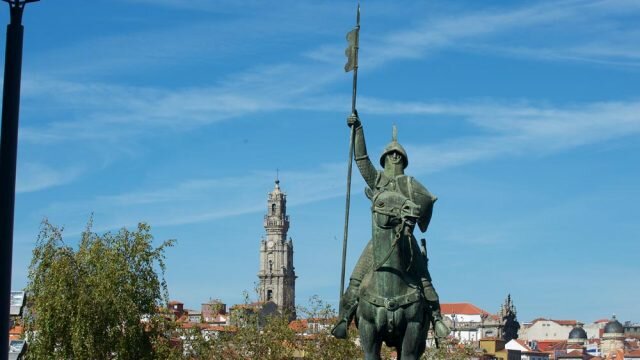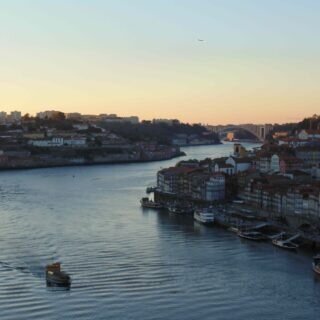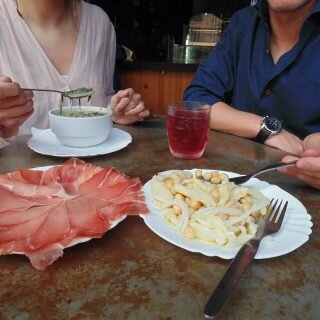For those who delve into Portugal’s history, the episode of the Moorish Invasions of the Iberian Peninsula have a great insight to offer into our culture and language, taking as an example the number of words that came from their occupation, such as azeite (olive oil) or almofada (pillow), or even something so simple as our extensive use of tile (the azulejos, as we refer to them) up to this day in our construction. The traces of this Moorish influence are everywhere to be seen, but what about Porto? Porto’s occupation under the Moors, as much as in the rest of Northern Portugal is not as clearly evident at first glance of their presence, at least not as much as in Southern Portugal, yet that does not mean that they do not exist. In order to find out we shall have a look at some of Porto’s history and myths surrounding the Moors. But before we get into that, we must first understand when and how did the invasions of the Peninsula unfold. Shortly after the passing of Mohammad, prophet of the Islamic faith, in 632 BC, the Umayyad Caliphate, based in Damascus, began its expansion across North Africa and into Europe, through the Iberian Peninsula. So it is that in 712BC they set foot in Gibraltar, ensuing a rapid conquest of Iberian territory, which was at that time under the control of many different kingdoms and counties, of Christian faith in the majority of them. It didn’t take long for them to effectively conquer most of what today is southern and central Spain and Portugal, in great part because all of these early kings and warlords constantly warred amongst each other, establishing the Iberian Caliphate of ‘Al-Andalus’, which would survive almost until the 16th Century. By 718, all of the Iberian Peninsula, with the only exception of the northernmost tip of the Asturias, was occupied by the forces of Tariq ibn Ziyad, notable commander of this first Moorish incursion, who even manage to cross the Pyrenees into France, however in 722 the tables turned in favour of the Christian Visigoths of the Peninsula under the command of Pelagius, king of the Asturias, at the Battle of Covadonga, and thus began the ‘Christian Reconquest’, out of which a number of new kingdoms in the Peninsula were born, including our fair Kingdom of Portugal.

The first lord of Porto
Even before our country came to be, the city of Porto, then named Portus Cale according to some accounts, was taken back from its Moorish occupiers in the year of 868 BC by Vímara Peres, a knight who is said to have come from Galiza. You can visit the statue, made in tribute to Porto’s first known lord, located just outside of the Sé, Porto’s Cathedral, upon which you can see two specific dates, which may look a bit confusing at first glance: 868-1968. Naturally, these do not refer to the lifetime of Vímara Peres, the first one being the time in which the fiefdom of Porto was by him claimed, the second one referring to the construction of the actual statue by sculptor Salvador Barata Feyo. He would rule not only over the city of Porto, but the entirety of the then small County of Portucale (which roughly corresponded to all of modern Portugal north of the Douro) right until his death, from the fortified village he himself established and named Vimaranis, after his own name, the village that would eventually become what is nowadays Guimarães, located within the northernmost region of Minho. Porto would eventually fall back under the influence of the Moorish occupiers of the Peninsula in a complex string of events that followed Vímara Peres’ passing in 873.

The Batalha of Porto
According to some accounts, in the year 920, Count Hermenegildo Guterres presided over the city of Porto when it came under attack by the Caliphate of Al-Andalus, or the Caliphate of Cordoba as it is also known, with Caliph Abd al-Raḥmān III at the head of a massive army, that easily outnumbered the defending forces. The skirmishes that ensued would last for days and the garrison of Porto fought bravely, even though it came close to defeat until it was ultimately rescued by Ordonho II, then king of Galicia and Leon and son-in-law of Count Hermenegildo Guterres. According to folk history, the height of these battles took place in what is today one of Porto’s most popular squares, precisely named Praça da Batalha (The ‘Square of the Battle’, literally translating), from which the name supposedly derived from. The forces of Abd al-Raḥmān III were defeated and pulled out of the city due east, with the local forces on their trail and so a bloody campaign ensued. This campaign culminated, once again, in the victory of the local garrison commanded by Count Hermenegildo Guterres and king Ordonho II, and according to folk tale, even though greatly outnumbered they were able to drive back the invader through the miraculous appearance of an image of the Virgin Mary, that was promptly named Nossa Senhora da Campanha (literally meaning ‘Our Lady of the Campaign’), to which a church was on a later occasion built, and that gave rise to the current name of this region, located in the outskirts of the city and where you may also find the city’s grand central train station: Campanhã.

And so the river ran red
The aftermath of this campaign we just referred to was gruesome: a great number of fatalities on both sides with a resounding victory of the Christian forces of Porto, as evidenced, according to a popular account of the event, by a statement of Hermenegildo Guterres when questioned by his son-in-law, lord Ordonho II, on the number of fallen enemies: “Já ‘conto mil’” (‘I count a thousand already’), he is claimed to have said, a statement that, as tradition renders us, is behind the naming of yet another region, within the surroundings of Campanhã: Contumil. Also, another legend has it that the clashes between both armies were so violent that they dyed a local river red with blood, upon which the river itself and the surrounding region were baptised as Rio Tinto (which literally stands for ‘Red River’).
Indeed like all folk tales, there is probably more myth than actual fact to them, but the truth lies there somewhere in the middle of both, and in a way they don’t cease to be an account of Porto’s own great and fascinating history, along with many other stories and myths that await for you behind the corners of our noble and ancient city.



